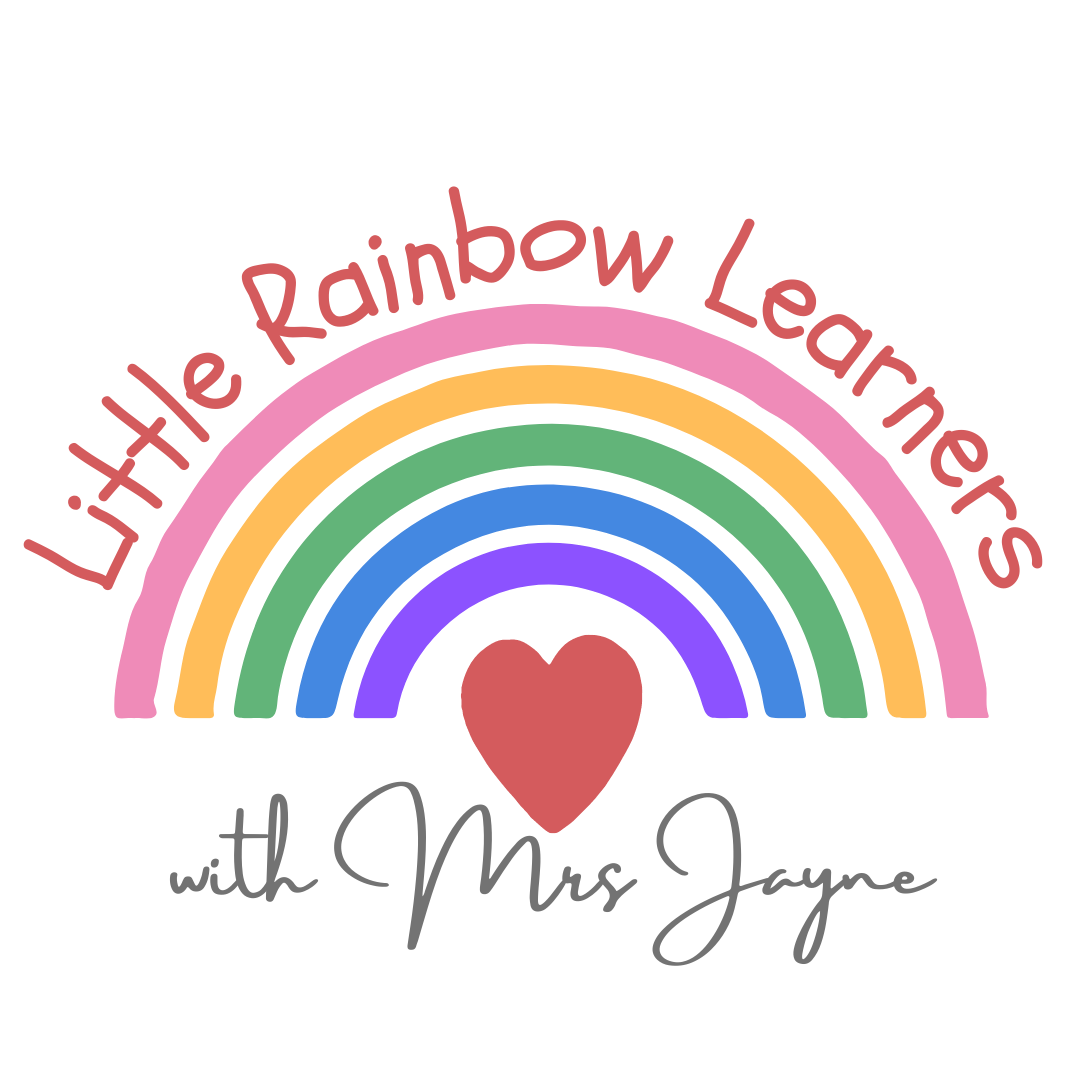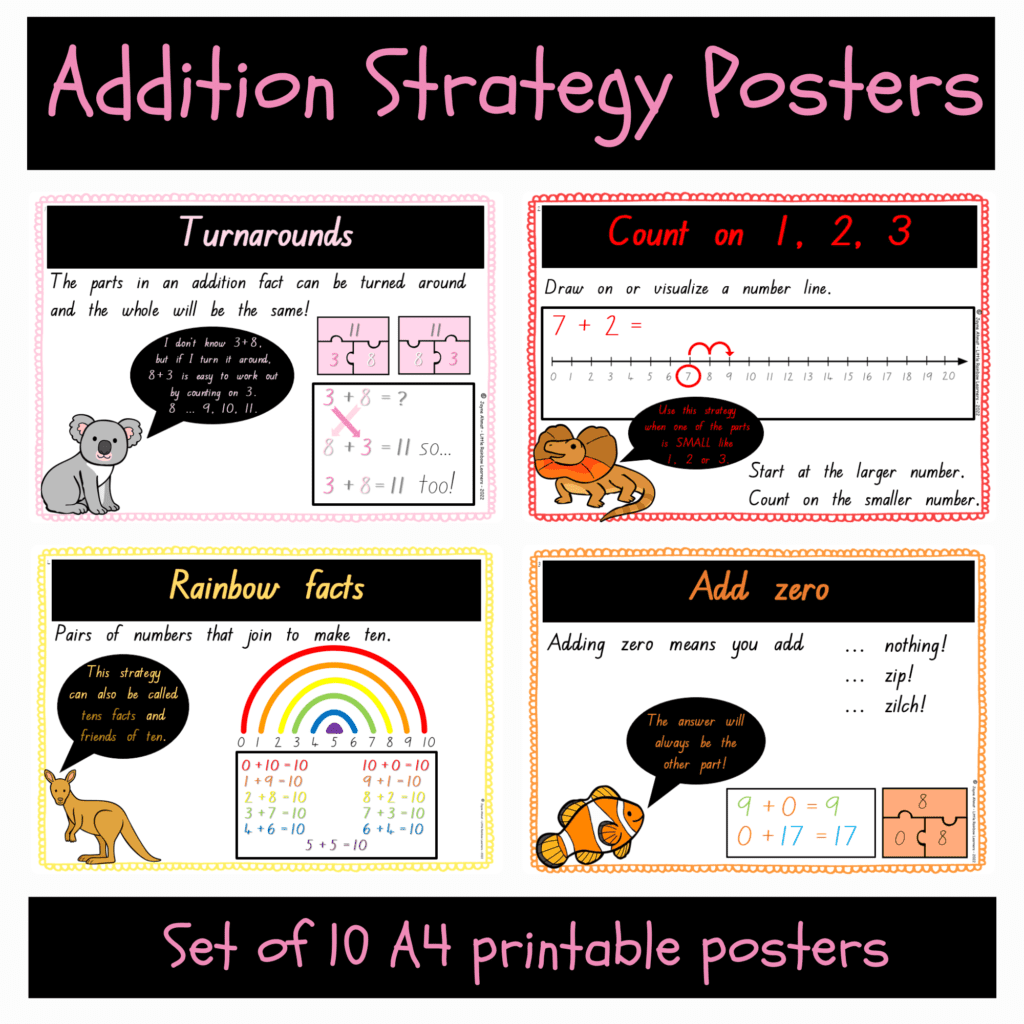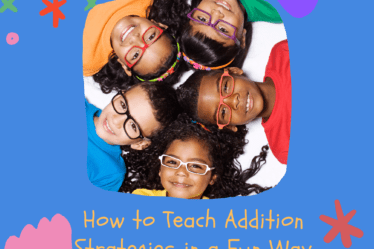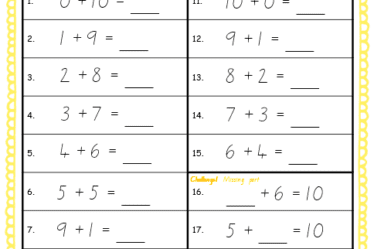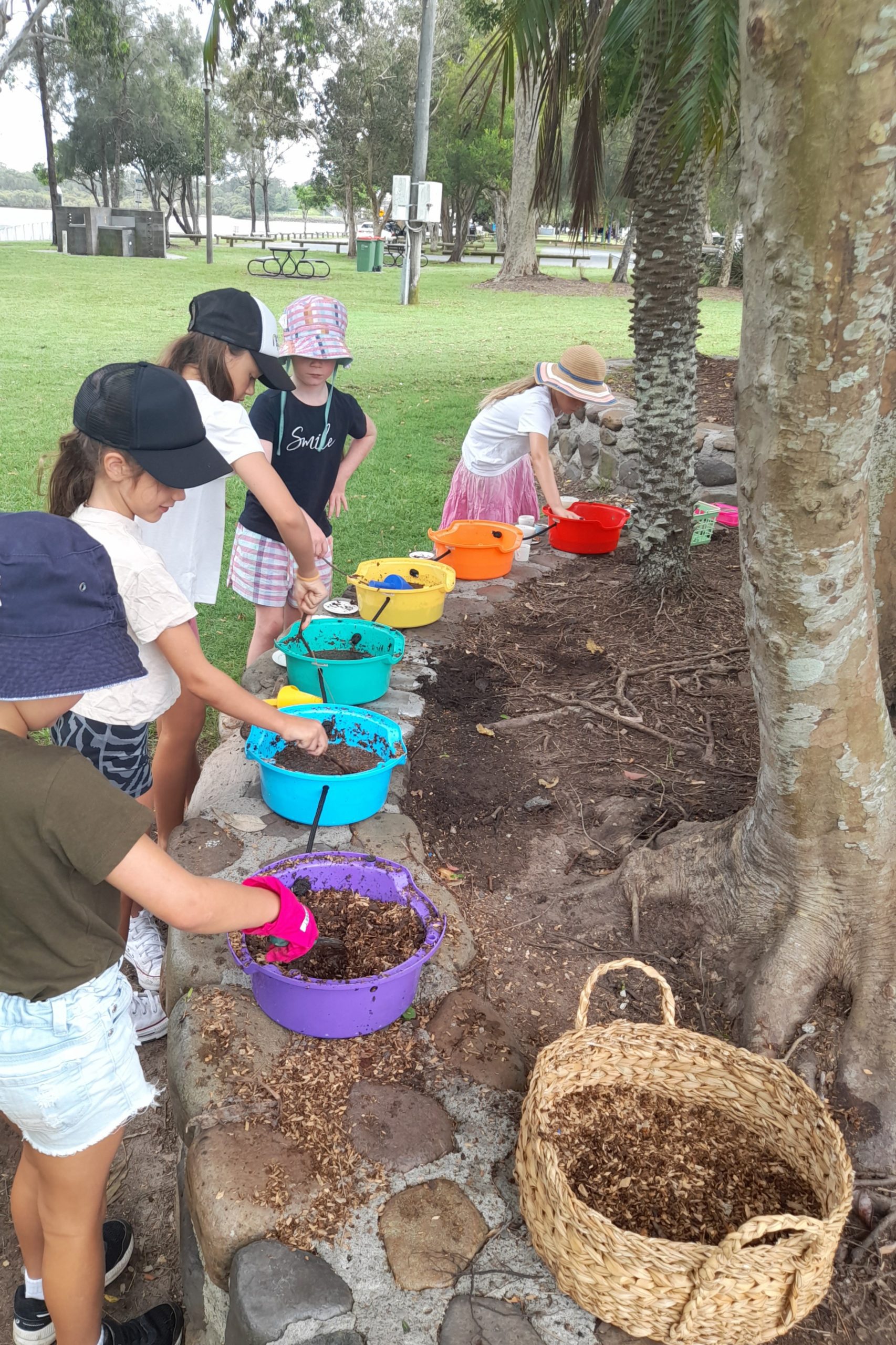
Hiya Early Years Teacher!
Are you looking for clear direction on which maths addition strategies are the most important for children to know and what order to teach them in? Are you wondering how to teach addition strategies to the little learners in your classroom?
Well … I’ve got you!
Let me step you through how to teach addition easily. Here’s the structure I’ve used for many years in my Early Years classrooms to teach little learners to tackle addition problems with confidence & independence.
What’s the best addition strategy to teach little learners?
The best addition strategy for little learners is …
… knowing there are more strategies to choose from than just ‘counting on’!
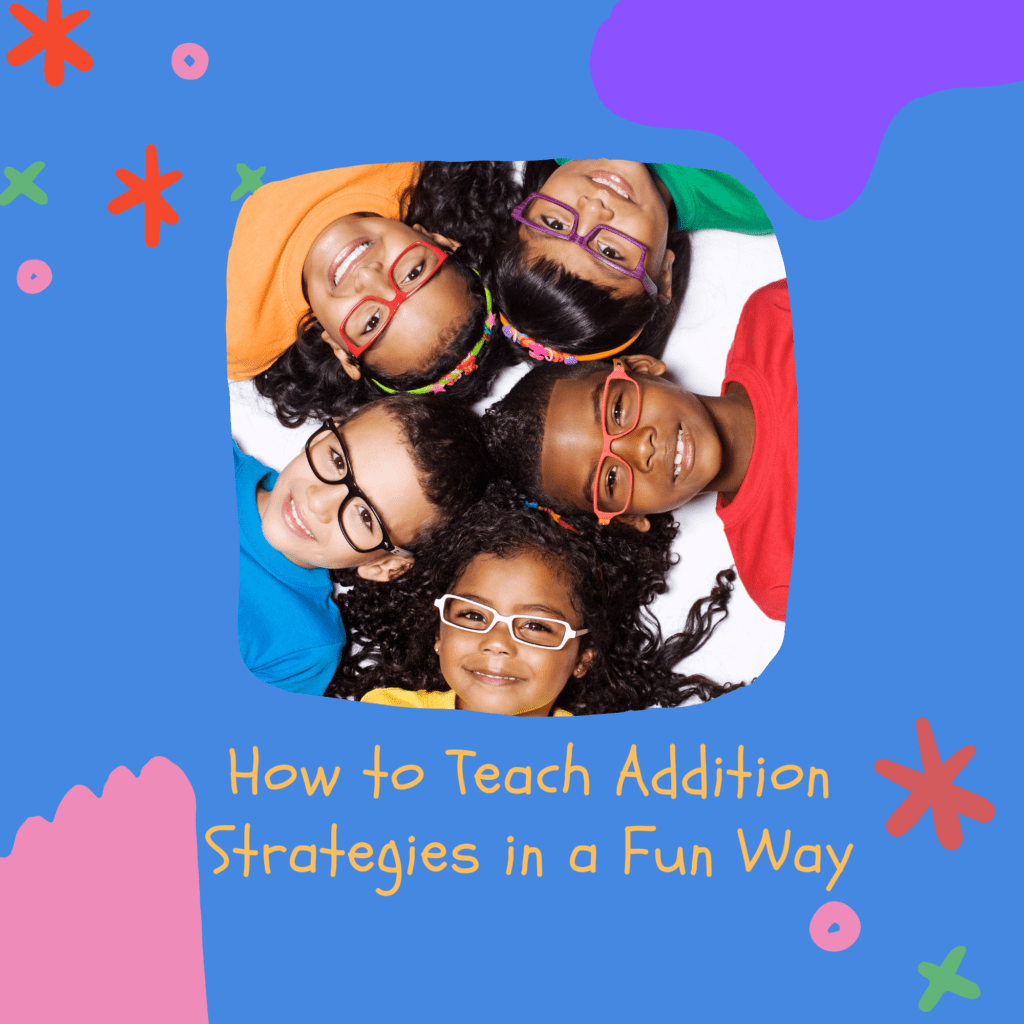
I recently worked 1:1 with a boy in a Year 5 classroom who needed extra support because of concentration & behaviour difficulties. With me sitting beside him & periodic access to favourite fidget resources, he was able to complete the basic addition & subtraction facts worksheet the teacher had set for the whole class. The boy was almost as quick to complete the work than the other students and even got all of the answers correct … but I felt crest-fallen as I watched him calculate every number sentence by holding up his fingers & whisper counting to himself.
The teacher was pleased that the boy had completed his work & commented “he’s actually quite good at maths”. I couldn’t help thinking “but, he’d be great at maths – perhaps even more engaged – if he was taught a small range of basic mental strategies. He’d be able to calculate addition facts without the need to put his pencil down, count in ones & use his fingers … in year 5!”
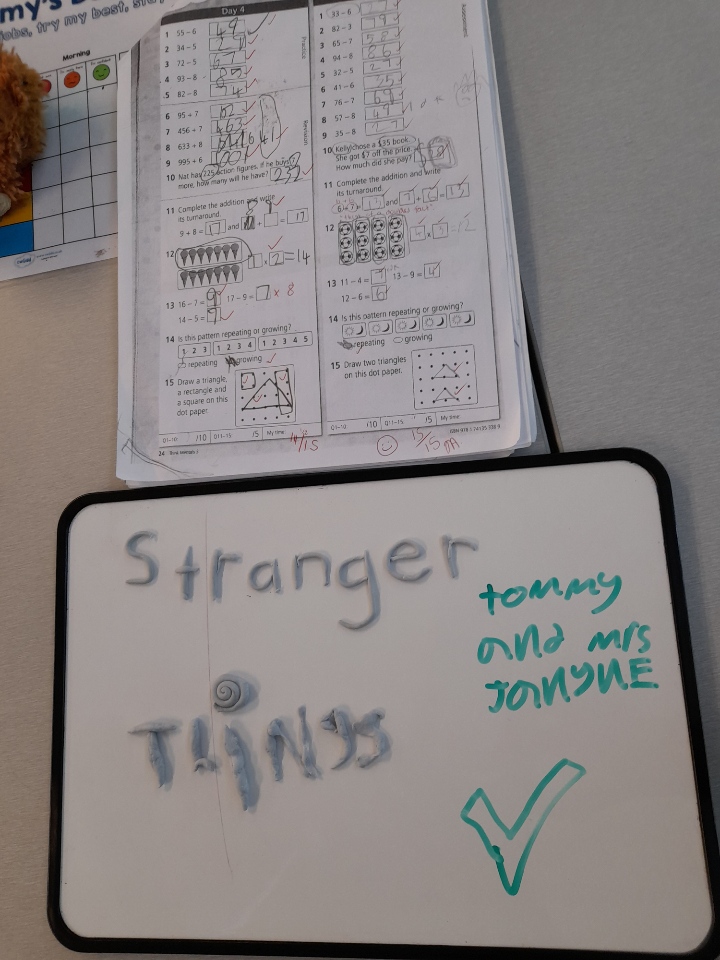
Although this post focuses on how to teach basic addition strategies to children in their first few years of schooling, I have used exactly the same system with all kinds of learners:
- my high-school-aged daughter who is on the Autism Spectrum & has additional learning needs;
- a multi aged Year 3 / 4 class of indigenous students;
- & most recently, in Year 2 classes of learners with diverse learning needs.
So, rather than searching for one mental addition strategy that is ‘the best’ (& it’s definitely not counting using fingers!), let’s look at the 10 basic maths addition strategies & the order to teach them. These strategies will set your students up for long-term addition success!
The 10 basic maths addition strategies & the order to teach them in
Addition Strategy #1
‘Turnarounds’
This strategy is officially known as “the associative property.” That’s a super-fancy way of saying that little learners need to know that 5+2 has the same answer as 2+5.
This is a fabulous mental strategy as children will encounter many addition problems that seem tricky to solve at first. Maybe like 3+9, until they realise they can work out the answer by turning around the parts to a more manageable 9+3! The turnaround strategy partners well with other strategies – it is often used in multi-step calculations such as turnaround & then ‘count on’ (as in the example just mentioned), or turnaround & then use a ‘near ten’ or ‘near doubles’ strategy.
Addition Strategy #2
‘Count on 1, 2 or 3’
Counting on has it’s place … & it’s place is firmly in the zone where one of the parts you are adding is small – like 1, 2 or 3. Children need to be taught other mental strategies for adding larger parts, so they are not trying to count on 5, 7, or 9!
Counting on larger numbers increases the likelihood of making an error because it’s hard to keep track mentally of how many you’ve counted on. It leads little learners to become over-reliant on using number lines, hundreds grids or their fingers.
Counting on larger numbers is not only inaccurate, it’s also slow & usually involves children putting down their pencil to work with maths resources or fingers. Can you bring to mind that little learner who would have forgotten the answer they just calculated by the time they … find their pencil again … & find the place on the page where they need to write the answer?! Keep counting on as the go-to mental strategy for adding 1 or 2 or 3 to another part.
Addition Strategy #3
‘Add zero’
Some little rainbow learners find this addition strategy a breeze – others get tricked on it all the time, thinking the answer is always “0”! Adding zero means adding zip, zilch, nada – the whole will always be the same as the other part 0 is being added to.
Modelling with resources, exposing children to a variety of real-world examples & a variety of word problems & exploring turnarounds is important here.
Addition Strategy #4
‘Add 10 to make a teen’
When you add ten to a single digit number, the answer will be the teen number that has one ten and the single digit number in the ones place. For example, 4 + 10 = 14.
Allow children to play with a variety of hands-on maths resources for this strategy (MAB blocks, connecting cubes, number lines, ten frames with counters, tens & ones place value columns) & encourage children to choose their preferred maths resources to visualise in their minds once they’re confident enough to have-a-go at using this strategy as a mental calculation method … “Do you like to visualise MAB blocks or ten frames? Maybe imagining a big jump of ‘10’ along the number line you keep in your head is easiest for you? Are you thinking of place value columns? You can put this part in the ones place & imagine adding this one 10 by putting a 1 in the tens place – it will make a teen number.”
Addition Strategy #5
‘Rainbow 10 Facts’
This strategy is always fun & particularly suits your visual & artistic learners. Show children that if you make a number line by writing the numbers from 0 – 10 from left to right, you can use lines to match the pairs of numbers that will always add together to make the whole ‘10’ …
“0 and 10 will always add to make 10, so will 10 and 0 – it’s a fact. 1 add 9 will always equal ten, so will the turnaround 9 add 1 – that’s another fact. When we join the two numbers that add to make 10 with curved lines like this, we can make a rainbow diagram! That’s why we often call these facts the ‘rainbow ten facts’ – it’s a fact that these pairs of numbers will always join to make 10 altogether.”
Addition Strategy #6
‘The Doubles’
Another fun strategy! Most little learners will find the smaller doubles easy to recall … 1+1, 2+2, 3+3, 4+4 & 5+5, but most will likely have trouble memorising the larger doubles … 6+6, 7+7, 8+8 & 9+9. 10+10 is another easy double for most & 0+0 deserves some attention to make sure children grasp the concept of adding nothing to nothing will result in … well … nothing!
To teach the doubles, I recommend exploring real-life examples of doubles & talking through visual representations of doubles facts on posters. Have your posters on constant display in your classroom for children to refer to as needed. Encourage children to look to the posters for help with the doubles. And then gradually … encourage children to visualise the doubles picture in their head when they get stuck on an answer before they snake a peak at the poster to check their answer!

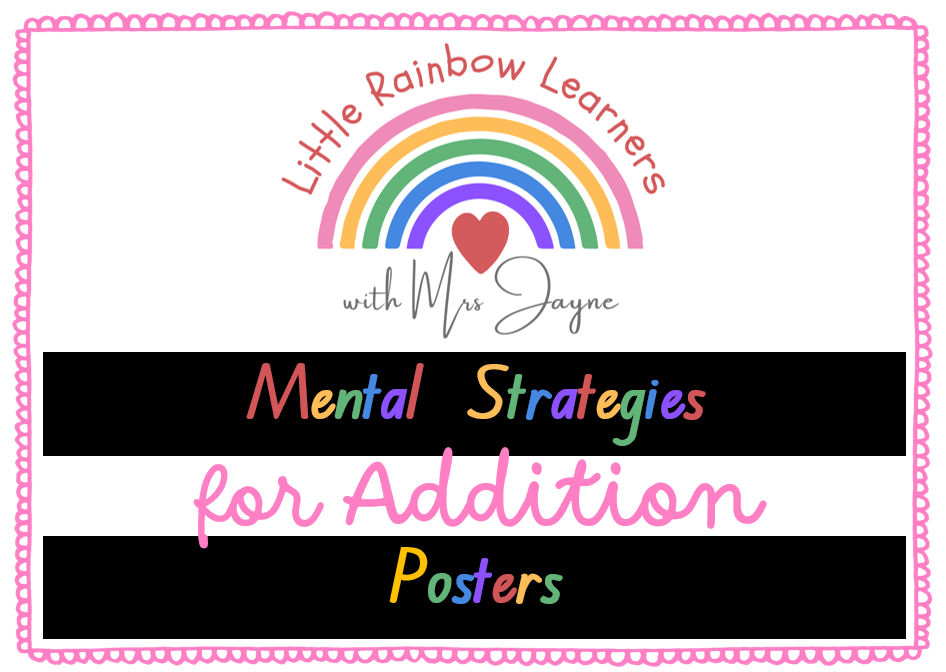

The remaining strategies are a bit harder! They require more brain power & involve multiple steps before arriving at the answer. Start teaching each of these strategies with all of your usual tricks –
- oral ‘think-out-loud’ explanations for your aural learners,
- hands-on resources for your kinaesthetic learners,
- and diagrams & jottings for your visual learners.
Gradually, children will be able to work more confidently & flexibly with these difficult strategies mentally, rely less on physical resources, & begin to memorise & recall many of these facts.
Addition Strategy #7
‘Near Doubles’
The near doubles strategy relies on children knowing their doubles facts first & using this knowledge to extend to facts that are close to – almost – nearly doubles!
If you know 7+7 is 14, then this will help you with 7+8.
7+8 is just one more than 7+7, so the answer will be just one more than 14.
One more than 14 is 15.
So, 7+8 =15.
Addition Strategy #8
‘Near 10, add 9’
This juicy strategy relies on knowledge of the ‘add 10 to make a teen’ strategy that’s based on place value. Adding 9 is tricky to do in your head, so … think of adding 10, which is much easier!
You know that 5+10 makes 15.
5+9 is just one less than 5+10, so the answer will be one less than 15.
One less than 15 is 14.
So, 5+9 = 14.
I like to teach this strategy as ‘add 10 then take back 1’. I model it most often on a 0-20 number line (make one big jump that adds 10, then take back 1 with one little reverse jump), but I also demonstrate with counters on ten frames, MAB blocks, & as number sentences with jottings.
By presenting the same strategy in lots of different ways, each little learner has the opportunity to choose the hands-on … and eventually … the mental process that suits their brain best.
Addition Strategy #9
‘Near 10, add 8’
All of the previous strategies really come into play for these last few more challenging strategies! The ‘add 8’ strategy is the same basic idea as the previous ‘add 9’ strategy, but now we explore that adding 8 is 2 less than adding 10.
How do we know this? Well, we know 8 is 2 less than 10 because 8 and 2 make 10 – that’s a rainbow fact we know. So, to add eight, we can add 10 then count back 2. And if the number sentence is presented in an order that’s a bit tricky, we can turnaround the fact before using this ‘add ten, take 2’ strategy.
Addition Strategy #10
‘The leftover facts’
Phew! We made it! Once all of the previous 9 strategies have been explicitly taught, there are only 2 leftover facts that haven’t already been covered by the earlier strategies – isn’t that amazing?! They are 7+4 & 7+5 (& their turnarounds).
These last facts can be taught using the ‘bridge ten’ strategy:
Break the smaller part into 2 pieces, 1 piece that will combine with the other part to make 10 (that’s the ‘bridge 10’ action this strategy takes its name from) & then add the ‘leftover broken part’. The whole will be a teen number.
I call these facts the ‘leftovers’ for 2 reasons:
- they’re the only facts ‘leftover’ after learning the first 9 strategies;
- & the ‘bridge 10’ strategy works well when using the language of ‘breaking’ or ‘partitioning’ one of the parts to make ‘an easy 10’, then adding the ‘leftover’ piece of the broken part to work out the whole.
And that’s it! That’s the whole suite of amazing, work-for-all-occasions strategies that little learners need to know! As they grow, children will be able to apply these basic strategies to more complex addition situations that involve 2-, 3-, or more-digit numbers, regrouping, word problems, addition presented vertically or horizontally & even to matching subtraction facts as they learn about fat families.
Happy days!
Mrs Jayne
Related Articles:
Read an informative research paper about the importance of developing mental strategies rather than relying on counting to solve addition, published by Australia’s Monash University, here: The Development of Addition and Subtractions Strategies for Children in Kindergarten to Grade 6: Insights and Implications
Check out Lucky Little Learners’ strategy-based-approach to addition here: 14 Strategies for Teaching Addition
Read Teaching Trove’s take on developing early learner’s number fact fluency here: Addition Strategies to Increase Fact Fluency
Need a set of addition strategy posters to display in your classroom?
I’ve got you! Click here to preview my set of Australian animal / rainbow themed addition strategy posters in my Teachers Pay Teachers store ‘Little Rainbow Learners’!
